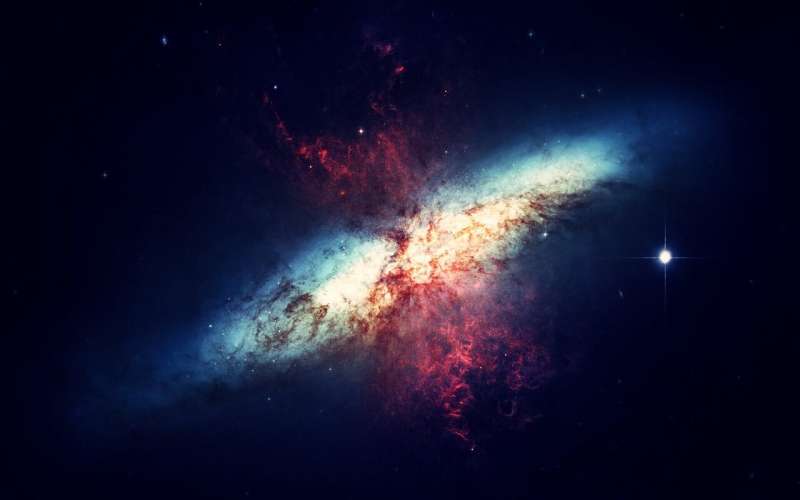November 3, 2022 report
Firing protons at fluorine-19 helps explain calcium content in oldest observed star

An international team of researchers working at a research site situated a mile and a half below China's Jinping Mountains, has found via experimentation, a likely explanation for the high concentrations of calcium seen in the oldest known star. The group describes their experiments in the journal Nature. Marco Pignatari and Athanasios Psaltis, with the University of Hull and the Technical University of Darmstadt, respectively, have published a News and Views piece outlining the work done by the team in the same journal issue.
Prior research has suggested that the oldest stars in the universe were formed just a few hundred million years after the Big Bang. Theory has suggested that all of them have long since disappeared, but their material likely shows up in the stars that were born thereafter. Theory also suggests that some of those later-generation stars may still be around.
One such star, called SMSS0313-6708, has been dated back approximately 13.6 billion years, the record for the oldest observed star. And because it is just 6,000 light years away, researchers have been able to study it pretty carefully. And they have found something odd—the star has more calcium than expected.
In this new effort, the researchers conducted experiments underground (where there is less interference from cosmic radiation) to see if they could mimic the processes believed to occur in early stars, in hopes of finding out why there is more calcium than expected.
The experiments consisted of firing protons at fluorine-19, an element that has been identified as an important player in ancient stars. When the element is hit by a proton, one of two things can happen. The first is that an oxygen isotope will be produced. The other possibility is that an isotope of neon-20 will be produced along with a gamma ray. The second type also enables stars to create heavy elements when they explode.
In their experiments, the researchers found that such "breakout" reactions, as they are called, were stronger than expected, which they note could result in the creation of more heavy metals, such as calcium.
More information: Liyong Zhang et al, Measurement of 19F(p, γ)20Ne reaction suggests CNO breakout in first stars, Nature (2022). DOI: 10.1038/s41586-022-05230-x
Marco Pignatari et al, An underground route to grasping the Milky Way's oldest stars, Nature (2022). DOI: 10.1038/d41586-022-03367-3
Journal information: Nature
© 2022 Science X Network


















